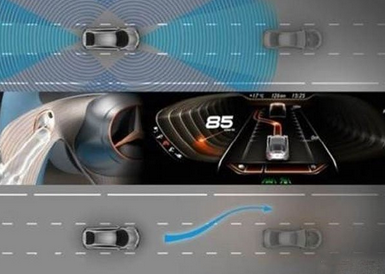Comprehensive analysis of the difficulties in the development of unmanned driving and the current technical means
First, automatic driving still needs a long way to go
Words such as ADAS, autonomous driving, driverless, and smart cars are popular in the world. If any intelligent hardware team or technology company can't connect with these keywords, it is quite abandoned by the world. However, if it is objectively analyzed, there is still a long way to go in the true sense of autonomous driving.

1) There is no perfect sensor
Regardless of the degree of intelligent driving, the first step is perception, which is to sense the responsible road environment around the vehicle. On this basis, the corresponding path planning and driving behavior decisions can be made. The various sensors used for sensing include: various forms of radar, monocular cameras, binocular cameras, etc., or sensing systems formed by different combinations of these sensors, each of which has advantages and disadvantages.
For example, the ability of laser radar to penetrate rain and fog is limited, the reflectivity of black color is limited; millimeter wave radar is not sensitive to animal body reflection; the distance and frequency of ultrasonic radar are limited; the camera itself is visible by visible light, in rain and fog The sensitivity of day and night has decreased.
2) The road to go from 90 to 100 is the most difficult.
If people go to drive, it is normal to have some small scraping and bumping in a year. However, if these accidents occur in the automatic driving system, they must become the focus of attention or even be unacceptable. In fact, our reliability requirements for machine intelligence far exceed the reliability of artificial intelligence. The use of each type of machine smart device is allowed only after its reliability is much higher than manual. Therefore, the goal of autonomous driving is not to "drive like a human being," but to "drive in a state where safety, comfort, and rationality are completely superior to ordinary people."
3) Complex road conditions are barriers to autonomous driving
Compared with Europe, the United States, and Japan, China's various road conditions are much more complicated. There are only 100 types of traffic lights; the shape of various traffic signs is not uniform; the width and width of lane lines are uneven, and even many roads do not have lane lines. Therefore, the automatic driving of the expressway, the automatic driving of a certain route and the true autonomous driving are two levels of problems, which are problems that need to be solved before fully automatic driving is achieved.
4) Legal barriers
In addition to technical issues, there are legal issues in our society. These technologies need to be recognized at the legal level, and it is necessary to clarify a series of technical problems and a large amount of complicated data support. The legally recognized process will certainly be a long process. Of course, these tasks are being carried out at the same time.
In summary, autonomous driving needs to go step by step and will not jump at once. The ADAS system will be the first stage of autonomous driving. When we have achieved accurate warning of dangerous driving behavior and accumulated a lot of experience and usage data, the next step is possible.
Screw Terminal Block Types,Beige Screw Terminal Block,Good Quality Terminal Block,Screw Terminal Blocks
Wonke Electric CO.,Ltd. , https://www.wkdq-electric.com